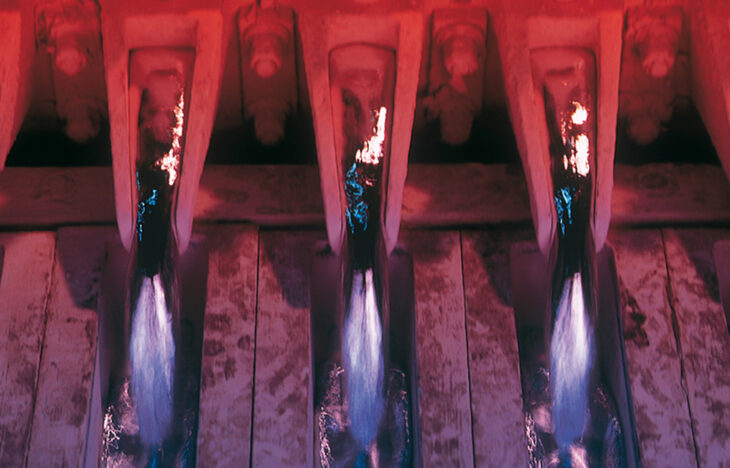Scientists from the University of Birmingham recently completed research on aluminum alloys that paves the way for improving the tensile strength of alloys used in casting and welding. The research focused on how microscopic crystals grow and change shape in molten metals as they cool.
Led by Dr. Biao Cai from the university’s School of Metallurgy and Materials, who collaborated with scientists at University College London and the University of Greenwich, the study involved the use of high-speed synchrotron x-ray tomography to “photograph” the changing crystal structures in molten alloys as they cool. The team worked with the Diamond Light Source and European Synchrotron Radiation Facility (ESRF) on the high-speed x-ray tomography.
Results of the study showed that, as aluminum-copper alloy cools, the solidification process begins with the formation of faceted dendrites, which are formed by a layer-by-layer stacking of basic units that are just micrometres in size. These units start out L shaped and stack on top of each other like building blocks — but as they cool, they change shape and transform into a U shape before becoming a hollowed out cube shape, while some of them stacked together to form beautiful dendrites.
“The findings from this new study provide a real insight into what happens at a micro level when an alloy cools, and show the shape of the basic building blocks of crystals in molten alloys,” said Cai. “Crystal shape determines the strength of the final alloy, and if we can make alloys with finer crystals, we can make stronger alloys.”
He added, “The results are in direct contrast with the classical view of dendrite formation in cooling alloys, and open the door to developing new approaches that can predict and control the formation intermetallic crystals.”
The research from the study was described in the paper, “Revealing growth mechanisms of faceted Al2Cu intermetallic compounds via high-speed Synchrotron X-ray tomography,” published by Acta Materialia.
Technology Development
Cai’s previous research demonstrated how magnetic fields influence crystal growth and resulted in a novel technology to improve the quality of recycled aluminum by removing iron from molten alloy in a simple, inexpensive process that uses magnets and a temperature gradient.
The technology is the subject of a patent application filed by University of Birmingham Enterprise. It has also attracted funding from the Midlands Innovation commercialization of Research Accelerator and the EPSRC-Impact Acceleration Account, which has enabled Cai to build a large-scale prototype that uses a 1 Tesla magnet and runs at up to 1,000°C.
The prototype is currently being tested using ingots provided by the Tandom Metallurgical Group, which operates an international trading facility from its base in Congleton, Cheshire. The facility produces aluminum alloys, master alloys and recycle aluminum products, scraps, and drosses.
Cai expects to publish the results of the testing and showcase the demonstrator to the industry before the end of the year. He aims to find industrial collaborators willing to run tests in foundry settings in combination with existing production lines.

